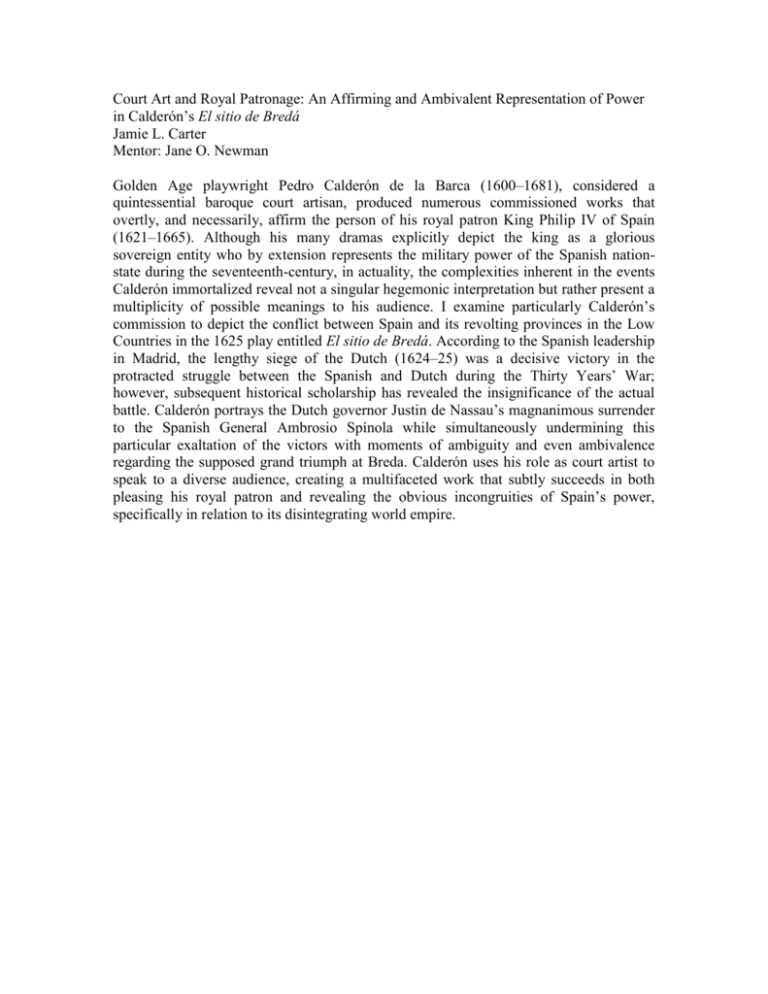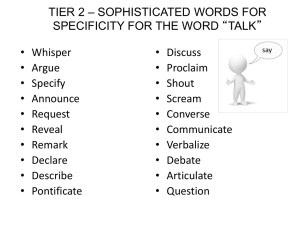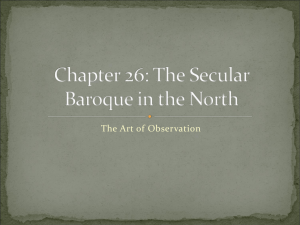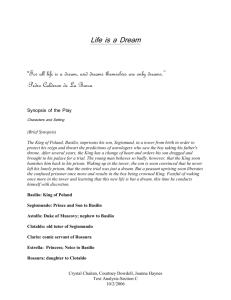Court Art and Royal Patronage: An Affirming and
advertisement

Court Art and Royal Patronage: An Affirming and Ambivalent Representation of Power in Calderón’s El sitio de Bredá Jamie L. Carter Mentor: Jane O. Newman Golden Age playwright Pedro Calderón de la Barca (1600–1681), considered a quintessential baroque court artisan, produced numerous commissioned works that overtly, and necessarily, affirm the person of his royal patron King Philip IV of Spain (1621–1665). Although his many dramas explicitly depict the king as a glorious sovereign entity who by extension represents the military power of the Spanish nationstate during the seventeenth-century, in actuality, the complexities inherent in the events Calderón immortalized reveal not a singular hegemonic interpretation but rather present a multiplicity of possible meanings to his audience. I examine particularly Calderón’s commission to depict the conflict between Spain and its revolting provinces in the Low Countries in the 1625 play entitled El sitio de Bredá. According to the Spanish leadership in Madrid, the lengthy siege of the Dutch (1624–25) was a decisive victory in the protracted struggle between the Spanish and Dutch during the Thirty Years’ War; however, subsequent historical scholarship has revealed the insignificance of the actual battle. Calderón portrays the Dutch governor Justin de Nassau’s magnanimous surrender to the Spanish General Ambrosio Spínola while simultaneously undermining this particular exaltation of the victors with moments of ambiguity and even ambivalence regarding the supposed grand triumph at Breda. Calderón uses his role as court artist to speak to a diverse audience, creating a multifaceted work that subtly succeeds in both pleasing his royal patron and revealing the obvious incongruities of Spain’s power, specifically in relation to its disintegrating world empire.











